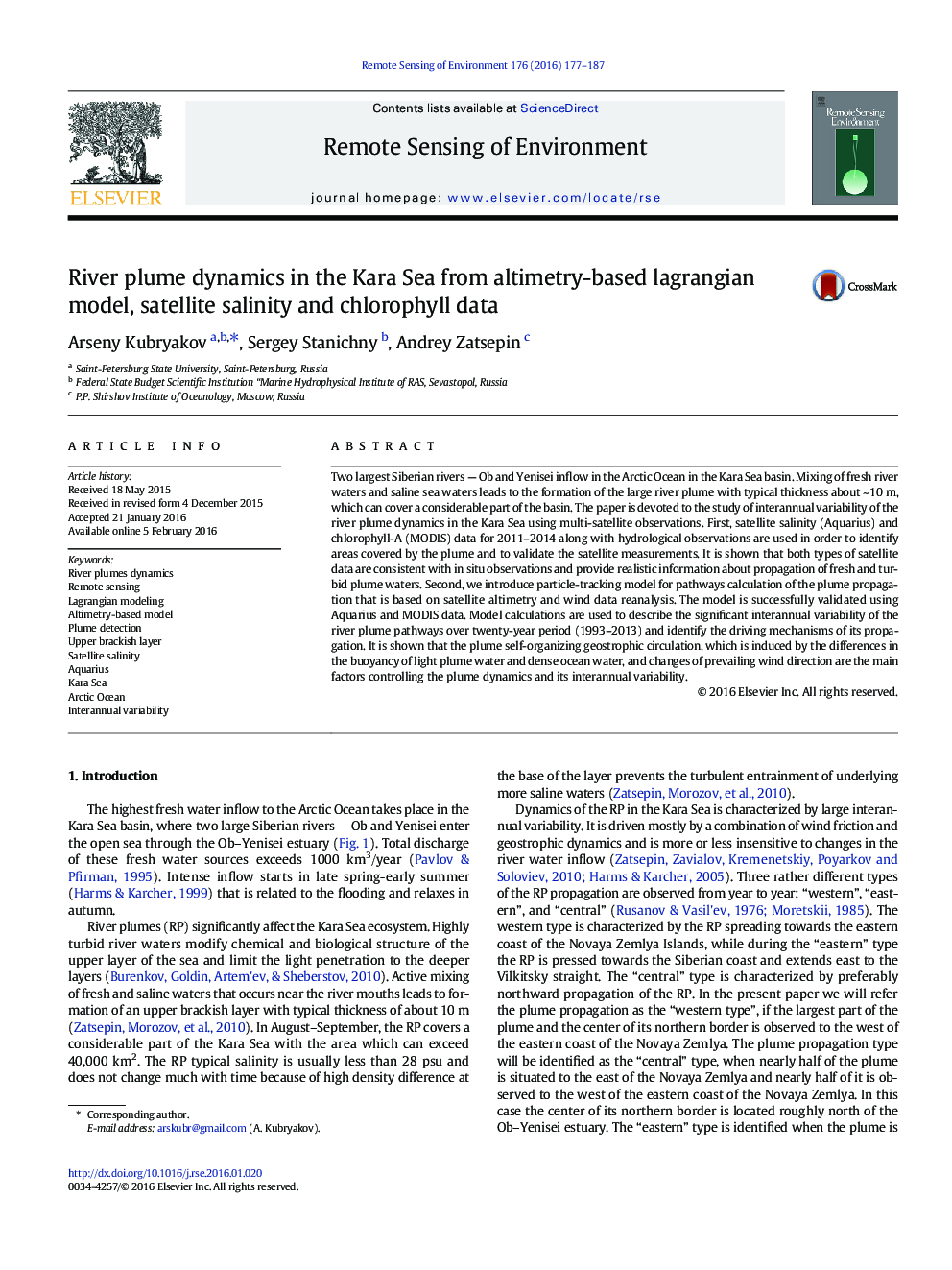| Article ID | Journal | Published Year | Pages | File Type |
|---|---|---|---|---|
| 6345348 | Remote Sensing of Environment | 2016 | 11 Pages |
â¢Variability of river plume propagation in the Kara Sea in 1993-2014 is studied.â¢Aquarius SSS and MODIS data allow to identify river plumes in the Arctic Ocean.â¢Altimetry-based particle-tracking model is successfully used to track river plumes.â¢Buoyancy-driven geostrophic circulation and wind direction control plume dynamics.
Two largest Siberian rivers - Ob and Yenisei inflow in the Arctic Ocean in the Kara Sea basin. Mixing of fresh river waters and saline sea waters leads to the formation of the large river plume with typical thickness about ~Â 10Â m, which can cover a considerable part of the basin. The paper is devoted to the study of interannual variability of the river plume dynamics in the Kara Sea using multi-satellite observations. First, satellite salinity (Aquarius) and chlorophyll-A (MODIS) data for 2011-2014 along with hydrological observations are used in order to identify areas covered by the plume and to validate the satellite measurements. It is shown that both types of satellite data are consistent with in situ observations and provide realistic information about propagation of fresh and turbid plume waters. Second, we introduce particle-tracking model for pathways calculation of the plume propagation that is based on satellite altimetry and wind data reanalysis. The model is successfully validated using Aquarius and MODIS data. Model calculations are used to describe the significant interannual variability of the river plume pathways over twenty-year period (1993-2013) and identify the driving mechanisms of its propagation. It is shown that the plume self-organizing geostrophic circulation, which is induced by the differences in the buoyancy of light plume water and dense ocean water, and changes of prevailing wind direction are the main factors controlling the plume dynamics and its interannual variability.
